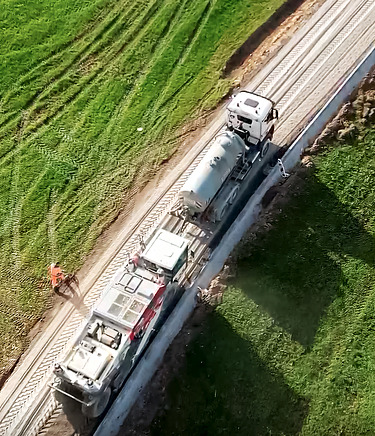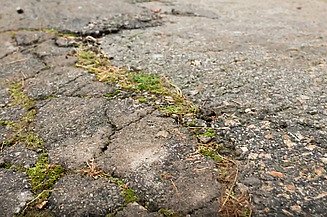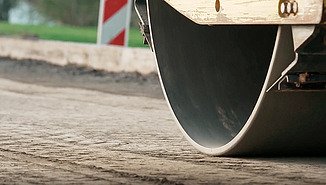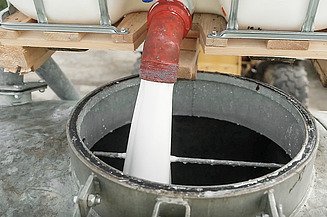Polymer technology: An adhesive for long-lasting roads

How polymer technology makes roads more resistant
Increasing heavy goods traffic and heavy rainfall are taking their toll on our roads. Many roads show recurring damage such as cracks and potholes. In Germany alone, every tenth kilometer of municipal road is now in poor condition. At STRABAG, we use polymer binders and an innovative construction method to rehabilitate roads from the ground up, permanently and economically.

How do polymer binders strengthen our roads?
In road construction, polymers act like a flexible adhesive that bonds cement and soil particles together while remaining elastic. The result is a road that is significantly more stable, water-repellent and less susceptible to cracking. In many cases of road damage, it is not enough to simply renew the asphalt surface, as the damage extends deep into the lower layers. The road surface has then lost its load-bearing capacity and no longer provides adequate protection against water and frost penetration. The polymer binder is used to consolidate the road and strengthen the entire road structure.
How does the innovative construction method reduce CO₂ and costs?

A layer consolidated with polymers can be covered with a new road surface after a short time - and does not have to rest for several days until the layers have set and are load-bearing.
What potential does polymer technology have in road construction?
The use of polymers in road construction opens up new prospects for resilient and sustainable infrastructure. Thanks to the more flexible construction method, even soils that are difficult to work with - such as fine-grained desert soils - can be turned into load-bearing roads that are less susceptible to damage and cracking. We also use ROADFLEX RF® to rehabilitate road verges - the areas to the side of the road - without having to replace the material. The approach offers road authorities the opportunity to rehabilitate roads faster, with a longer service life and lower emissions - a modern alternative in view of the high need for rehabilitation in the European transport network.
Windorf community project
In the municipality of Windorf near Passau, we rehabilitated a road around two kilometers long with ROADFLEX RF®. The existing municipal road was no longer frost-proof, the asphalt was cracked and the subsoil was severely deformed - it was therefore not possible to repair it with asphalt. For the renovation, the STRABAG team mixed the polymer binder together with cement under the previously milled road surface and then compacted it. The new asphalt surface could then be laid after just 24 hours. The innovative process shortened the construction time by around four weeks and reduced CO₂ emissions by around 20 percent by eliminating the need for transportation.

Polymers in road construction
- Polymers are chemical compounds that consist of long, chain-like molecules. Similar to polymer-modified mortar in building construction, polymer binders create a robust yet elastic structure in road construction.
- ROADFLEX RF® is a joint development of STRABAG, Wacker Chemie AG and H2BQ. The binder is harmless to soil and groundwater in accordance with the guidelines of the German Institute for Building Technology (DIBt). The polymer content in the cement-bound mixture is less than one percent and is therefore not classified as microplastic.
Downlaods

Factsheet